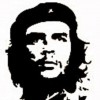Pending orders: A pending order is an order that is not yet a live trade. It is an order that you place because you do not want to buy or sell before the price of a financial instrument reaches a certain point. The order will be pending until the market reaches your preferred entry level.

A pending order will be in place for as long as the price does not reach your entry level. You can set your pending order to expire on a certain date and time (i.e. if it does not reach your entry price before then), or you can close it manually.
While a pending order remains in place, you can also adjust its stop and/or take profit level(s). Once price reaches your preferred entry level, the order will be triggered even if you’re completely offline, as your order is already in your broker’s server.
 There are several types of pending orders but we use 4 most popular for our signals here. They are:
There are several types of pending orders but we use 4 most popular for our signals here. They are:
Buy Stop
Sell Stop
Buy Limit
And Sell Limit
Buy Stop: It is an order that enables you to buy at a higher price. For example, assuming Silver (XAGUSD) is currently at 18.685, you can set a Buy Stop order that will trigger a trade once the price reaches 19.000.
Sell Stop: It is an order that enables you to sell at a lower price. Let’s use the same example of Silver, if at 18.685. You can set a Sell Stop order that will trigger a trade once the price reaches 18.215.
Buy Limit: This is an order which makes you to buy at a lower price. If S&P 500 is trading at 3185.75, you may want to enable a Buy Limit order that will trigger a trade for you once that trading instrument plummets towards 3175.05.
Sell Limit: This is an order that allows you to sell at a higher price. Let us say S&P 500 is trading at 3185.75, you can elect to enable a Sell Limit order that will trigger a trade for you once that S&P 500 rallies towards 3200.75.
We hope this short article has thrown some light on your queries. You can message us if there are more questions.
May your trades be green.
Source: https://learn2.trade

 Hot Features
Hot Features













